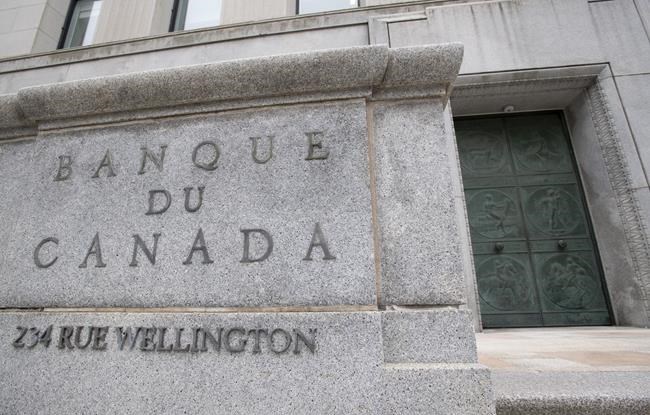OTTAWA — Interest rates are back down to rock bottom levels and while that may be good news for borrowers, investors looking for investment income to pay for their retirement are once again searching for yield.
While stock markets have rallied from the lows they hit at the end of March as the pandemic began, there are no signs the Bank of Canada is ready to increase rates any time soon.
Sylvain Brisebois, national sales manager and portfolio manager at BMO Private Wealth, says in the past, investors would go to bonds to generate income in a portfolio, but with interest rates at record lows, the rates paid on bonds don't cut it for many investors.
"Bond yields of yesterday are no longer available and so they are going to have to probably broaden their horizons a little bit and consider the untraditional way of looking for income," he said.
That often means considering stocks that pay a dividend.
In the quest for the right types of companies to hold, Brisebois says it helps to look for industries that have strong barriers to entry like the Canadian railroads, utilities or pipelines.
During the 2008-09 financial crisis, Canada's big banks kept their dividends intact, maintaining a key stream of income for their investors.
This time around, the Big Six banks have also maintained their payouts, however Laurentian Bank reduced its quarterly dividend by 40 per cent in an effort to provide greater financial strength and flexibility.
And key, he says, it to recognize the difference between dividend growth and a high dividend yield. A high yield might mean that the stock price has come down dramatically and they haven't cut their dividend yet or that the company is distressed and on the verge of having to make a change.
For example, many of the big dividend payers in the Canadian oilpatch would have had high yields before they were forced to slash their dividends as the pandemic hit and oil prices nosedived.
Brisebois says a company with a low dividend yield that can increase its payment to shareholders over time is probably a better bet than a company with a high yield, but may be at risk of cutting it.
"Do not just chase high yield. I would argue you want to spend more time and energy trying to find a company that is going to grow the dividend as opposed to one that might be risking cutting it."
Kristi Ashcroft, head of product at Mackenzie Investments, said investors looking for income should look to a combination of dividends, interest income as well as capital gains.
To that end, Ashcroft suggests Canadians may also want to consider alternative investments in addition to stocks and bonds.
"Alternative strategies and alternative assets are more accessible to Canadian retail investors than they have ever been before," she said.
Investing in alternative assets for individuals can mean investing in funds that hold assets that include commodities, infrastructure like airports or highways, land and real estate, while alternative strategies may invest in long and short positions and use leverage.
"It used to be kind of the purview of institutional investors, big pension funds, or the high-net worth investors," Ashcroft said.
"Today there are more options available to Canadian retail investors than ever before and some of them offer very interesting diversification opportunities to a portfolio as well as potentially being able to construct an income stream that is not traditional."
But whatever the strategy, Brisebois cautions against blindly chasing income.
"That has the potential of creating all kinds of other risks," he says.
He likes to keep it simple and sticks with more traditional strategies.
"You want to stick to some companies that have very strong business models."
This report by The Canadian Press was first published June 11, 2020.
Craig Wong, The Canadian Press



